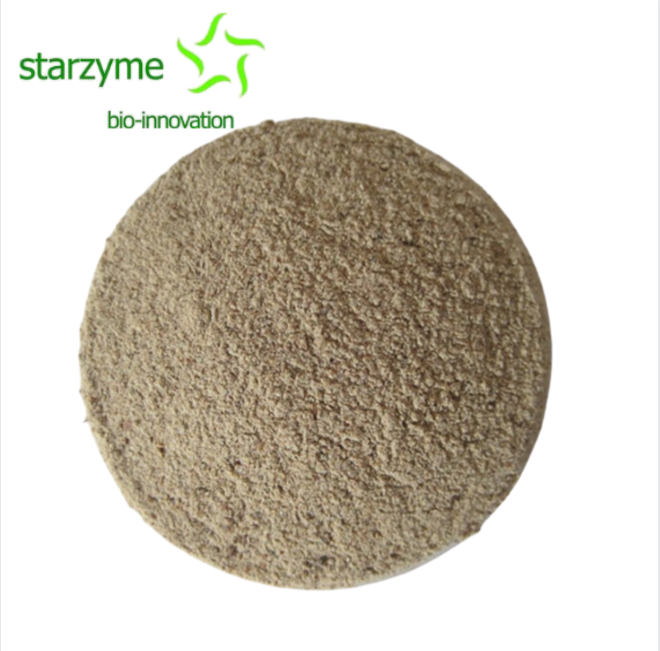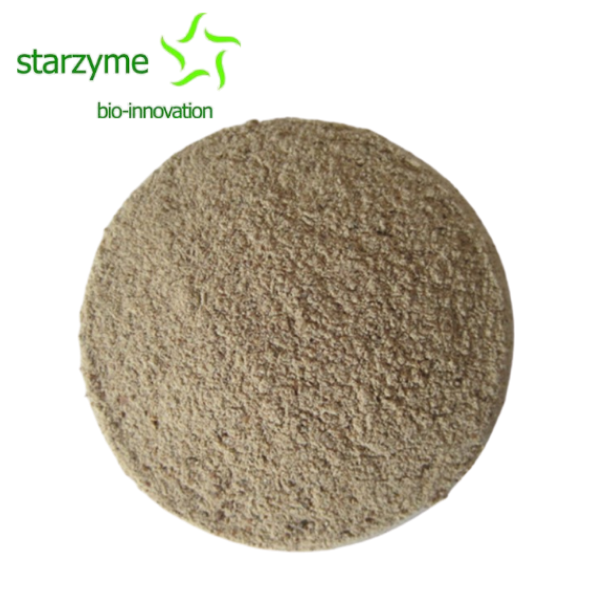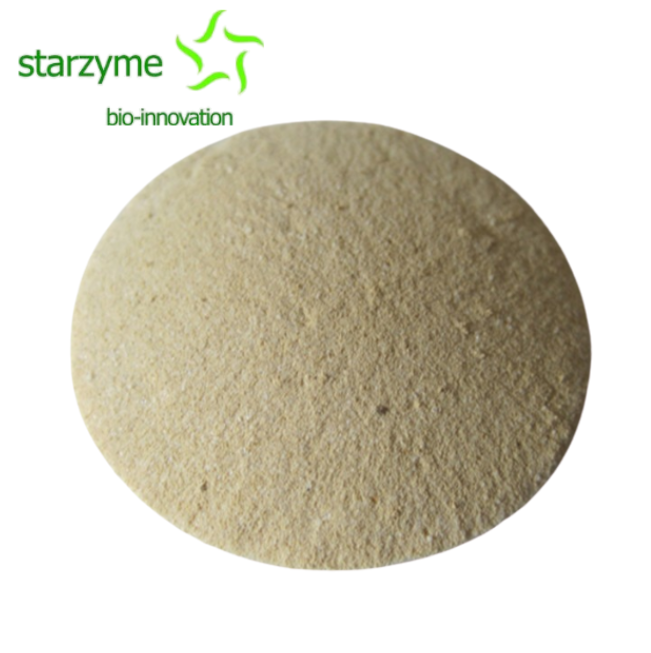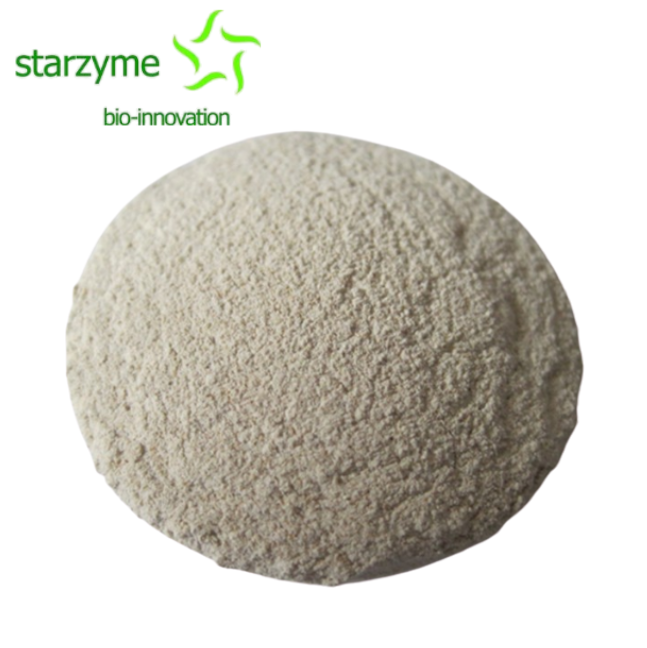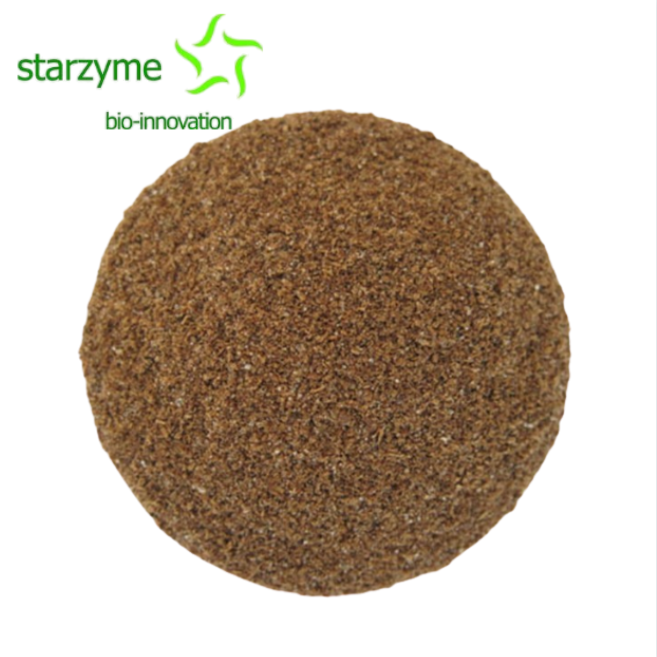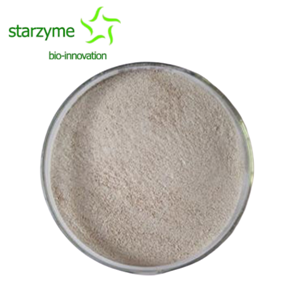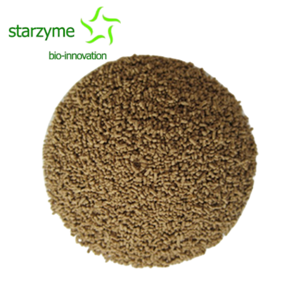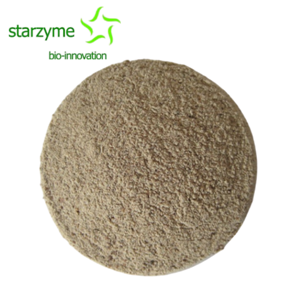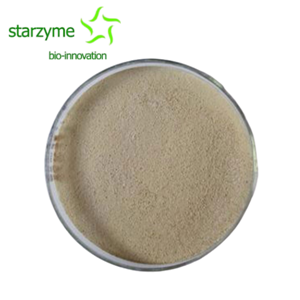Phytase Enzyme

- Starzyme
- China LiaoNing
- Within Two weeks afterreceivedthe order
- 150 Tons Permonth
1. Appearance: light brown powder with less than 8% of water
2. Activity: 100,000 U/g
3. The phytase can enhance daily weight gain of broilers and egg production of laying chickens, and reduce broken eggs of laying and breeding chickens.
4. The phytase can increase the utilization of Ca, Zn, Co, Mg, and Fe in dietary feeds.
5. The phytase can increase the utilization of protein, amino acids, starch, and lipid.
The phytase is prepared by deep fermentation of fungus. As a phosphate monoester hydrolase, phytase hydrolyzes phytic acid (salt) in the digestive tract to produce inosiol and phosphoric acid (salt). The absorbable phosphorus and other nutrients bound to phytic acid (salt) can be released from phytic acid (salt), which increases the utilization of phosphorus and reduce the feed cost and environmental pollution.
Features:
1. Appearance: light brown powder with less than 8% of water
2. Activity: 100,000 U/g
3. Temperature: 30-55°C
4. pH: 3.0-6.0
Definition of the unit of the enzyme activity: One unit (U) is defined as the amount of enzyme needed to hydrolyze sodium phytate (5.0 mmol/L) to release 1 μmol of inorganic phosphorus (based on dipotassium phosphate measured by absorbance value in the chromogenic reaction with ammonium nitrate, ammonium molybdate and ammonium alum) using triton and bovine serum albumin as surfactants in acetic acid-sodium acetate buffer (0.25 mol/L, pH 5.5) at 37°C in 1 min (total reaction time is 30 min). (GB/T18634-2009)
Applications:
1. The phytase can increase the utilization of phosphorus and reduce the excretion of phosphorus from feces.
2. The phytase can enhance daily weight gain of broilers and egg production of laying chickens, and reduce broken eggs of laying and breeding chickens.
3. The phytase can increase the utilization of Ca, Zn, Co, Mg, and Fe in dietary feeds.
4. The phytase can increase the utilization of protein, amino acids, starch, and lipid.
5. The phytase can enhance the quality of litter and the hardness of feces and thus results in clean egg production.
6. The amount of supplementation in feeds are as follows (based on 5,000 U/g):
(1) The adding amount of the phytase in the compound feeds of laying and breeding chickens is 60 g/ton which equals to 0.1% (summer) or 0.12% (winter) of available phosphorus or 7-8 kg of calcium hydrophosphate.
(2) The adding amount of the phytase in the compound feeds of commercial broilers is 100 g/ton which equals to 0.1% of available phosphorus or 7 kg of calcium hydrophosphate.
(3) The adding amount of the phytase in the compound feeds of pigs is 100 g/ton which equals to 0.1% of available phosphorus or 7.5 kg of calcium hydrophosphate.
Specification: 20 kg/bag
Storage:
Store in dry and cool (below 25°C) area with ventilation. During transportation, avoid direct exposure to strong sunlight, rain and moisture. The enzymes will lose activity at high temperature or under strong sunlight. The enzyme activity can be maintained up to 90% for 6 months when stored at room temperature.

Analysis on the current pain points of the industry
1. False mark of enzyme activity
The product is marked with 100,000 enzyme activities, and the actual enzyme activity is 60,000, resulting in incomplete hydrolysis and indirectly increasing the cost of enzymes.
2. Product is unstable
Lack of enzyme protection technology and quality control, unstable enzyme activity, and differences in product specifications for each batch, resulting in product quality fluctuations.
3. Long production cycle
No enzymatic hydrolysis experience and enzyme compounding technology increase labor cost and R&D cycle, which indirectly affects the production schedule.
For us, our major is to solve these pain points
1. The enzyme activity can be customized, providing different enzyme activity products and solutions
2. Stable enzyme activity, unique enzyme activity protection technology to reduce fluctuations in production quality
3. Enzyme activity is not false, strict quality control links, third-party testing to reduce enzyme costs
Quality control strength
6 key control point inspections, escorting the whole process of quality, using extraction, membrane separation, vacuum freeze-drying, spray drying and enzyme activity protection technologies to produce products that fully meet the requirements of global customers.
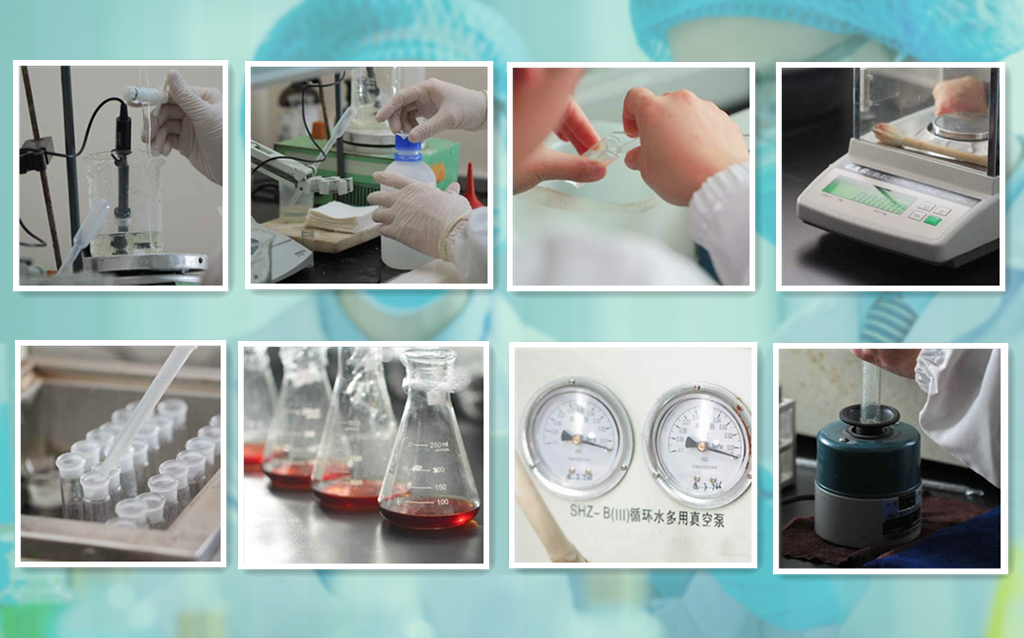
Production capacity
Eight automatic primary fermentation cylinders (60 m³),
2 pure culture tanks (10 m³), 2 pure culture tanks (5 m³),
4 pure culture tank (4 m³), 2 pure culture tanks (1 m³),
4 pure culture tanks (0.3 m³), 1 large air compressors,
1 spray/drying tower (1 ton/h),
4 air drying and fluidized bed drying equipment
1 production line of ultra concentrate liquid enzyme.
The annual production capacity of the Starzyme is more than 20,000 tons of liquid, powd
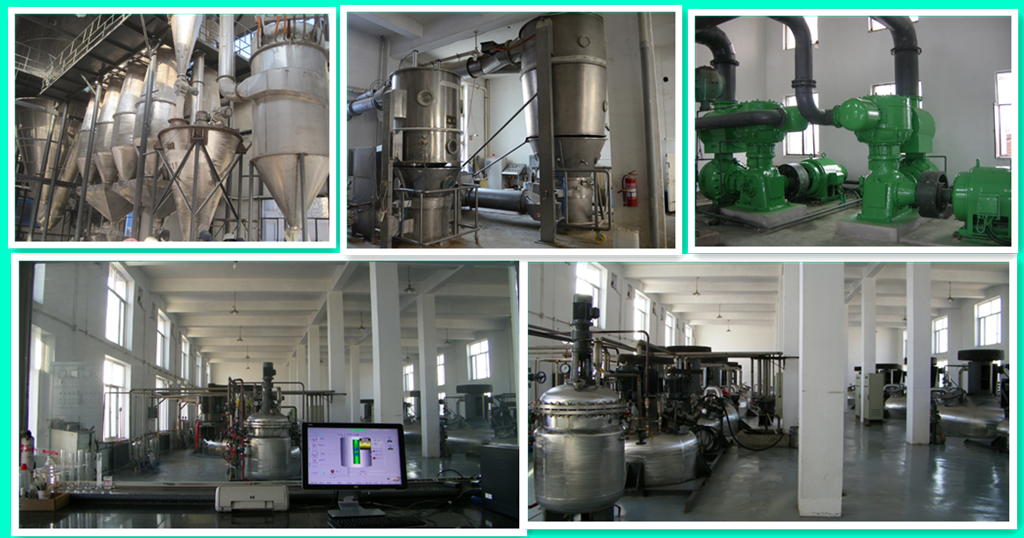
Thank you for your browsing, as a professional manufacturer of enzyme preparations and micro-ecological preparations, we are also very willing to help you . If you want to know the targeted solution, please leave a message in the message window below, we will assign a professional product consultant to contact you.

